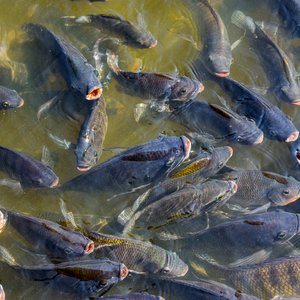IFFO’s China webinar held on November 29 and 30, 2022 explored the latest insights on fishmeal and fish oil market trends, with specific focuses on China, Peru, Mexico and Europe.
Opening the webinar, IFFO’s director general, Petter Martin Johannessen, underlined the important role that marine ingredients play in supporting the growth of aquaculture as the most effective way to produce protein, with half of the raw material already certified as being responsibly sourced.
IFFO’s China director, Maggie Xu, highlighted the capacity for marine ingredients to contribute to food security moving forward. In 2020, based on FAO and IFFO data, marine ingredients contributed to the production of 7kg of fish per capita. Thirty to forty million tons of additional feed ingredients are estimated to be needed in aquafeed globally by 2030.
A resilient industry
IFFO’s market research director, Enrico Bachis, insisted on the resilience of the industry. With just over five million metric tonnes of fishmeal and 1.2 million metric tonnes of fish oil, 2021 production was actually in line with that of previous years. The sector is able to maximize precious raw material: 30% of the raw material used worldwide to produce fishmeal and fish oil comes from byproducts. According to TripleNine’s chief sales officer, Jon Tarlebø, production of fishmeal in Europe over the past few years has been around 600,000 metric tons, with a good part of production coming from salmon trimmings.
Well-managed fisheries
IFFO’s technical director, Brett Glencross, reported FAO’s announcement earlier in 2022 that 65% of global fish stocks were considered well managed, which represented more than 80% of the global fisheries biomass. Importantly, recent studies have demonstrated that when effective fisheries management is put in place, there is a clear capacity to rebuild fish stocks.
James Frank, director at MSICeres, shed a light on Peru’s, fishmeal and fish oil industry, based on 82 plants (industrial and residual plants). The quota set by the Peruvian authorities on November 23, 2022 for the second fishing season of anchovy and white anchovy in the North-Center of the country is 2.283 million tons, which is 33% of the biomass. “The quota indicates a healthy biomass,” said Enrico Bachis.
Focus on Asia
Asia and China provide more than 80% of the farmed fish worldwide, they consume 70% of the marine ingredients used in aquaculture, but only 30% of the fish oil is used in aquafeed, Enrico Bachis explained. Focusing on China, associate professor at Shanghai Ocean University, Wenbo Zhang, insisted that China is the largest aquaculture producer in the world, with the production accounting for about 60% of the global aquaculture production.
China is a big fishmeal consumer, Xia Fan, executive deputy director of China National Feed Quality Inspection and Testing Center (Beijing), explained. Its domestic fishmeal production is low, therefore, the main high-quality feed fishmeal is imported. “It is of great significance to strengthen the safety access and risk analysis of fishmeal to promote the healthy development of feed production, animal husbandry and aquaculture in China,” she insisted.
Focus on Mexico
According to Armando Coppel of Maz Industrial, Mexico contributes 1.35% to the world’s catch. The small pelagic fishery in Mexico began in the 20th century on the northwestern coast and later in the state of Sinaloa in 1972. Currently, activities in the small pelagics fishery are carried out with a total of 94 active vessels and catch around 750,000 tons per year.
The video recordings of the event are available here.










